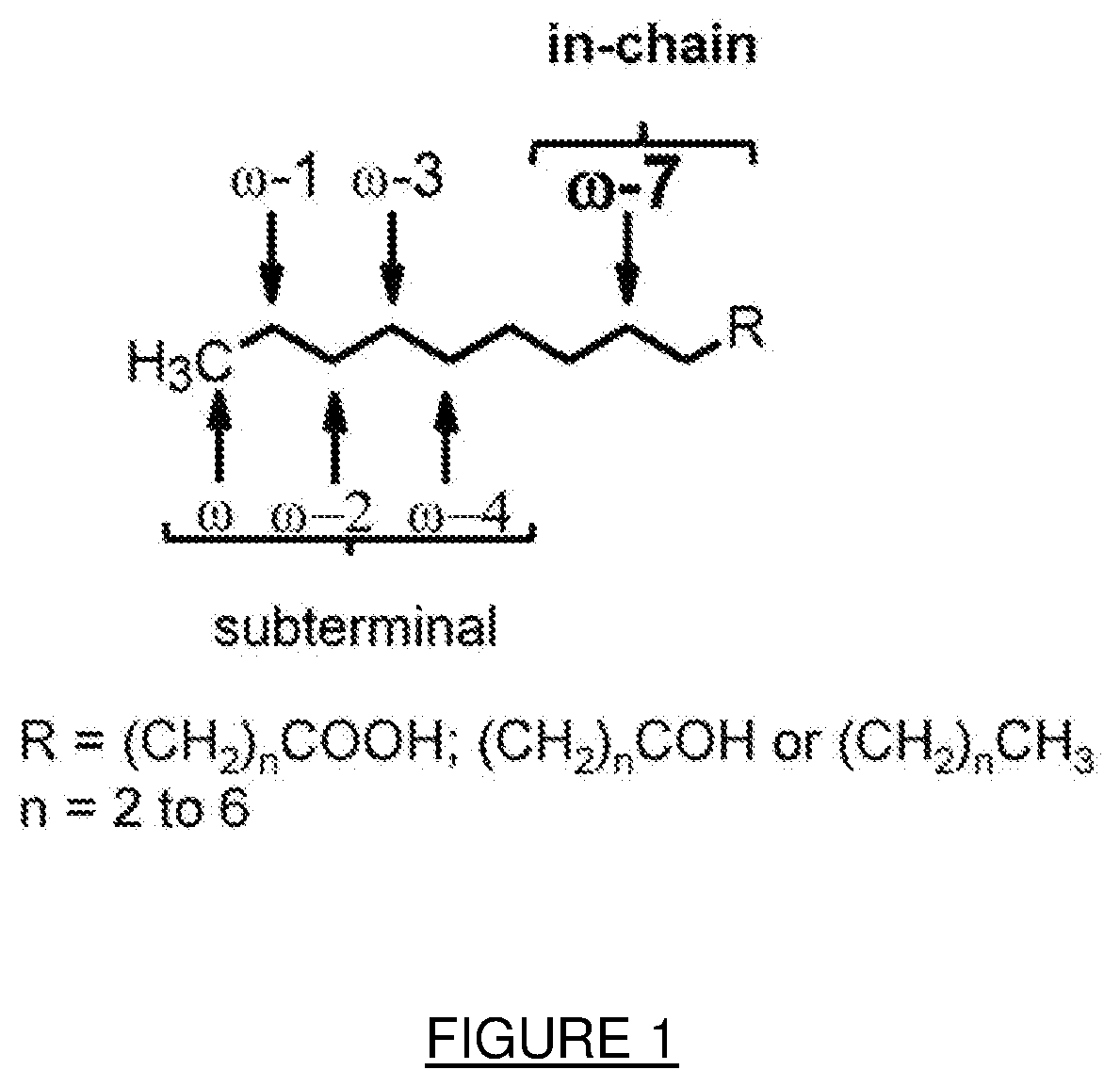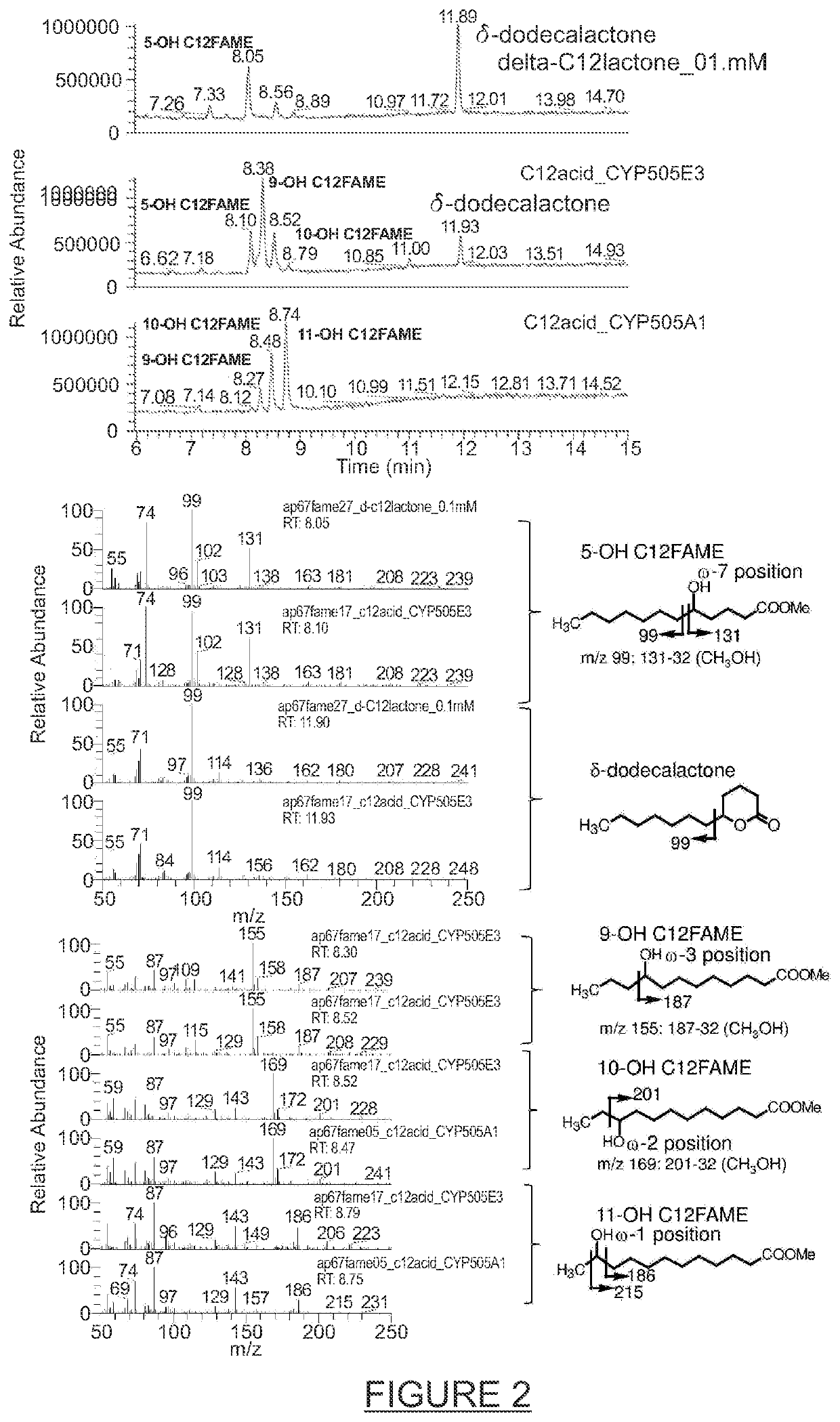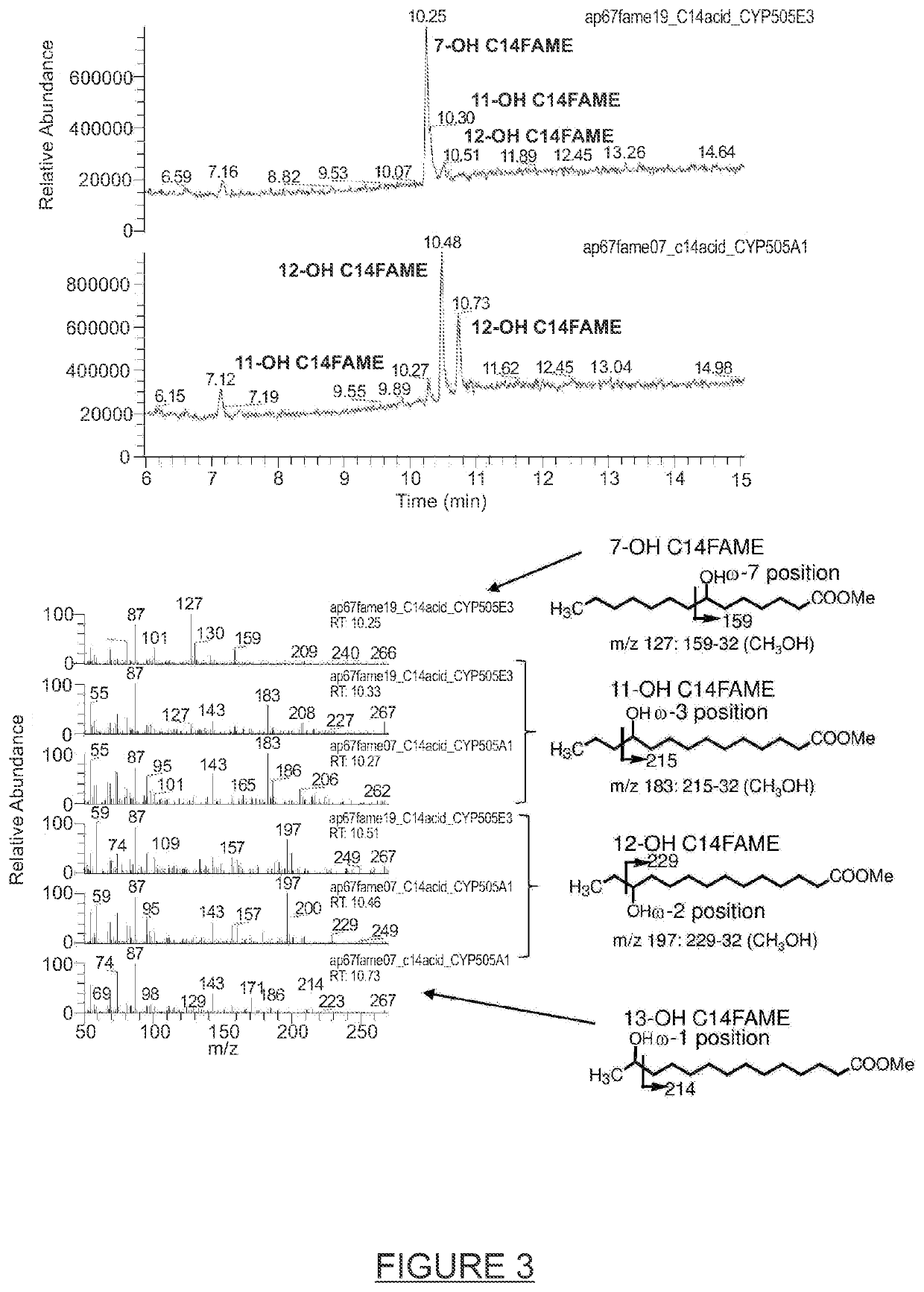Process for the modification of alkanes, fatty acids and fatty alcohols
a technology of fatty acid and alkane, which is applied in the field of process for the modification of alkanes, fatty acids and fatty alcohols, can solve the problems of undesirable racemic mixture compounds, unfavorable environmental protection, and no longer accepted consumer-friendly mode of production
- Summary
- Abstract
- Description
- Claims
- Application Information
AI Technical Summary
Benefits of technology
Problems solved by technology
Method used
Image
Examples
experiment 7
f 1,5-dodecane Diol to δ-dodecalactone and Chiral Analysis of Lactones Produced from Dodecanol and C12 Fatty Acid
[0117]To convert 1,5-dodecanediol to δ-dodecalactone 170 μL of an ethyl acetate extract containing 150 mM dodecanol and 5.5 mM 1,5-dodecanediol was placed in a 40 mL vial and the ethyl acetate evaporated by incubating the vial at 100° C. for 5 min. After evaporation of the ethyl acetate the dodecanol / dodecanediol mixture was resuspended in 1 mL of an HLADH expressing culture of E. coli permeabilized with Triton X100 (1% v / v was added and the cell suspension incubated at 37° C. for 10 min). This reaction mixture containing 1 mM of 1,5-dodecanediol and 25 mM of dodecanol was incubated at 30° C. and 180 rpm for 24 h. It was then extracted with ethyl acetate (2×0.5 mL) containing 2 mM undecanol as internal standard and analysed on a VF5 column using a GC with FID detector for quantification and a GC-MS with a Chiraldex G-TA column (30 m×0.25 mm ID) to determine enantioselecti...
experiment 10
he Amino Acid Identity Between CYP505s with ω-7 Hydroxylase Activity
[0127]The results obtained with the different CYP505s tested for the hydroxylation of C12, C14 and C16 fatty acids, fatty alcohol and alkanes are summarized in Table 2. The amino acid sequences of the 12 different CYP505s were aligned using the MUSCLE algorithm as applied in the Genious 6.0.6 software package and the calculated amino acid identities are displayed in FIG. 23. Comparison of Table 4 and FIG. 22 shows that the CYP505s with ω-7 hydroxylase activity which can be used for the synthesis of δ-dodecalactone are CYP505E3 (SEQ ID No 1), CYP505Ak (SEQ ID No 2), CYP505E1 (SEQ ID No 3), CYP505Pe (SEQ ID No 4), CYP505An (SEQ ID No 5), CYP505Pc (SEQ ID No 6) and CYP505Pf (SEQ ID No 7) which all share at least 72.8% amino acid identity. The remaining five CYP505s tested share less than 50.7% amino acid identity with these CYP505s (ω-7 hydroxylases) and did not display detectable ω-7 hydroxylase activity towards the s...
PUM
| Property | Measurement | Unit |
|---|---|---|
| molecular weight | aaaaa | aaaaa |
| pH | aaaaa | aaaaa |
| wet weight | aaaaa | aaaaa |
Abstract
Description
Claims
Application Information
 Login to View More
Login to View More - R&D
- Intellectual Property
- Life Sciences
- Materials
- Tech Scout
- Unparalleled Data Quality
- Higher Quality Content
- 60% Fewer Hallucinations
Browse by: Latest US Patents, China's latest patents, Technical Efficacy Thesaurus, Application Domain, Technology Topic, Popular Technical Reports.
© 2025 PatSnap. All rights reserved.Legal|Privacy policy|Modern Slavery Act Transparency Statement|Sitemap|About US| Contact US: help@patsnap.com



